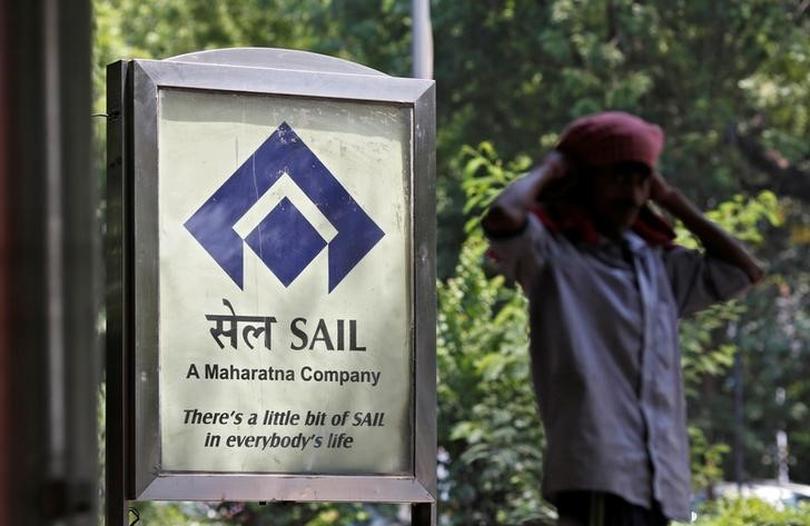SAIL’s Q1FY24 profit slides 73%, yet better than estimates

SAIL’s Q1FY24 profit slides 73%, yet better than estimates
Steel Authority of India Limited (SAIL) witnessed a substantial decline of 73.5% in its consolidated profit for the first quarter of the fiscal year 2023-24 (Q1FY24), amounting to Rs. 212.5 crore, when compared to its profit of Rs. 804.5 crore during the same period in the previous fiscal year. This decline can be attributed to higher figures in the categories of other income and reduced tax expenses.
Remarkably, SAIL’s financial performance exceeded the consensus estimates of market analysts for the quarter in question. Bloomberg’s consensus estimate had indicated an anticipated net loss of Rs. 67.2 crore for this particular period. However, SAIL reported a profit instead, which underlines a more favorable financial outcome than initially projected by financial experts.
This unexpected profit showcases SAIL’s ability to navigate challenges and capitalize on favorable factors, ultimately yielding a better financial result than anticipated. It suggests that the company has effectively managed its financials, taking advantage of increased other income and mitigated tax expenses to achieve a more positive outcome than what the consensus estimates had predicted. This outcome could potentially reflect prudent financial strategies and operational efficiencies employed by SAIL during the specified quarter.
In essence, during the quarter under review, the component of other income exhibited a substantial increase, reaching Rs. 463.7 crore in contrast to the previous period’s Rs. 170.8 crore, marking a noteworthy growth of 2.7 times. This surge in other income contributed positively to the overall profit.

Furthermore, tax expenses for the quarter experienced a significant reduction of 68.8%, amounting to Rs. 75.7 crore, as opposed to the Rs. 242.8 crore recorded in the quarter ending on June 30, 2023. This reduction in tax expenses further bolstered the company’s profitability for the specified quarter.
In terms of standalone revenue, there was a moderate growth of 1.4% during the quarter, with revenue amounting to Rs. 24,359.1 crore, as compared to Rs. 24,028 crore during the corresponding period in the previous year. This growth in revenue aligns with the Bloomberg consensus estimate of Rs. 23,607.5 crore, indicating that SAIL’s actual revenue for the quarter surpassed market expectations.

The combined effect of increased other income, reduced tax expenses, and a modest growth in standalone revenue contributed to SAIL’s unexpected profit for the quarter. This outcome underscores the company’s ability to optimize its financial performance by efficiently managing various financial aspects, ultimately resulting in a more favorable financial position than initially projected by market analysts.
During the quarter, the metric of Earnings Before Interest, Taxes, Depreciation, and Amortization (EBITDA) amounted to Rs. 1,648.8 crore, reflecting a decline of 28.4% in comparison to the corresponding period from the previous year. This reduction in EBITDA can be attributed to several factors, including muted revenue growth and increased expenses, which collectively impacted the company’s operational performance.

Notably, Bloomberg’s estimates for EBITDA stood at Rs. 1,518.6 crore for the same quarter, suggesting that the actual EBITDA reported by the company exceeded market expectations.
The subdued growth in revenue, combined with higher expenditures, contributed to the contraction in EBITDA. While the company experienced challenges in its operational performance, the actual EBITDA figure outperformed the anticipated value, indicating that the company managed to mitigate some of the negative effects through effective financial management and other strategies.
Overall, the quarter’s EBITDA performance highlights the dynamic nature of a company’s operational landscape, where revenue trends and cost structures interact to shape financial outcomes. Despite facing headwinds, the company’s ability to surpass the estimated EBITDA suggests resilience and effective management in navigating the complex financial environment.
The EBITDA margins for the quarter ending on June 30, 2023, contracted to 6.8%, which represents a decrease compared to the EBITDA margins of 9.6% recorded for the same quarter in the previous year.
This decline in EBITDA margins signifies a reduction in the proportion of EBITDA (Earnings Before Interest, Taxes, Depreciation, and Amortization) in relation to the total revenue generated during the specified quarter. A lower EBITDA margin suggests that a smaller portion of the revenue is available to cover operating costs, interest, and other financial obligations.
The reduction in EBITDA margins could be attributed to various factors, including muted revenue growth, increased operating expenses, or shifts in the cost structure of the company. It indicates that the company faced challenges in maintaining its profitability at the same level as the corresponding quarter of the previous year.
The decline in EBITDA margins underscores the importance of closely monitoring and managing various financial aspects, as changes in revenue and expenses can significantly impact a company’s overall financial performance and profitability.




